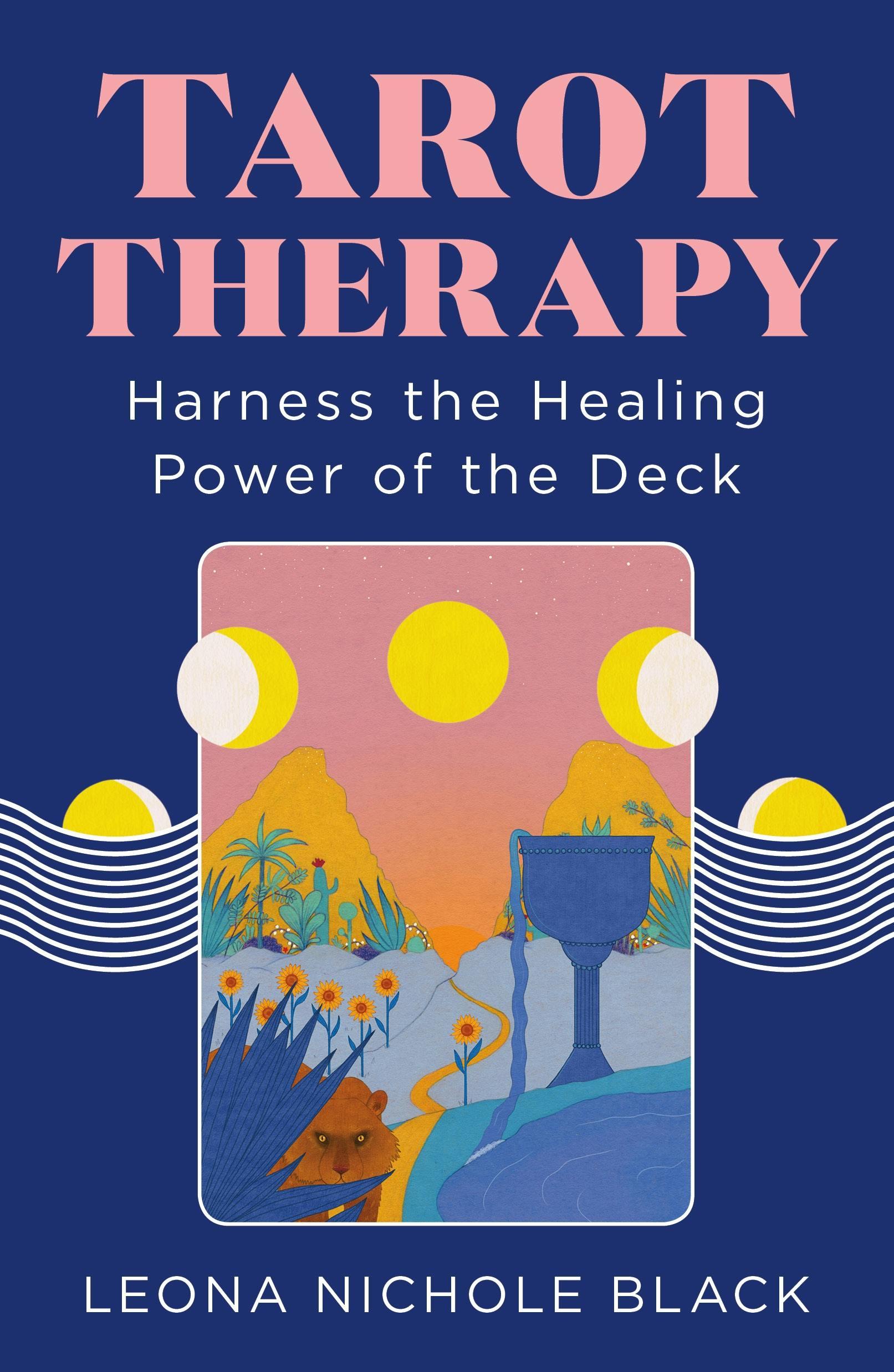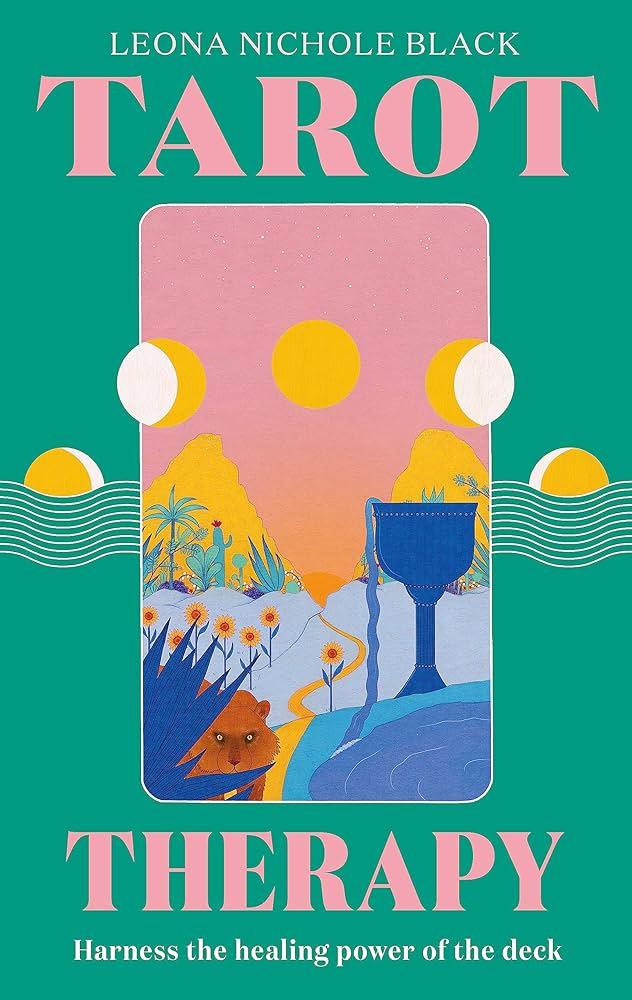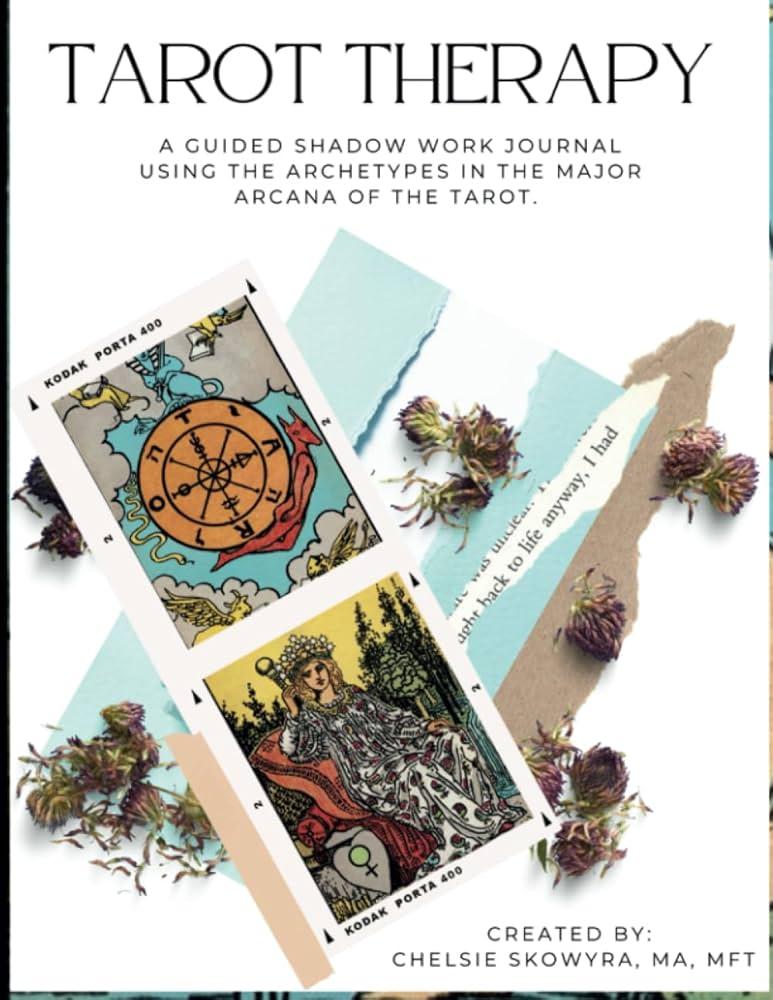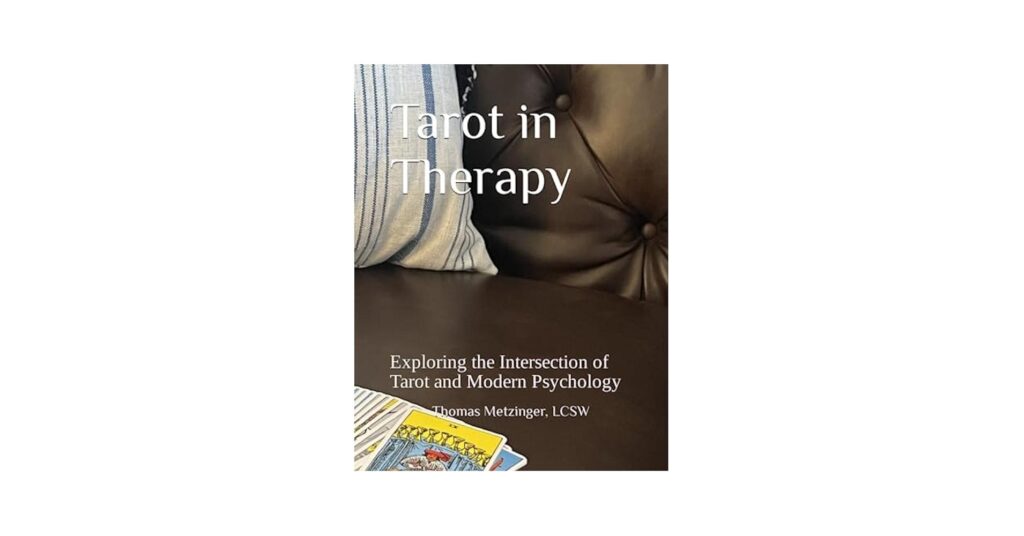In recent years, tarot cards have moved beyond their mystical reputation, finding a surprising foothold in conversations about mental health and self-reflection. Once dismissed as mere fortune-telling tools, tarot decks are now being explored by many as a means of gaining insight, fostering mindfulness, and even complementing traditional therapeutic practices. But what does this shift mean for the field of psychology? Are tarot readings a legitimate form of emotional guidance, or do they risk oversimplifying complex mental health issues? In this article, we delve into the perspectives of psychologists to unpack the growing intersection between tarot and therapy, examining whether these ancient cards might be carving out a new space in modern healing.
Table of Contents
- Exploring the Rise of Tarot in Modern Mental Health Practices
- Understanding the Psychological Perspectives on Tarot’s Therapeutic Potential
- The Role of Symbolism and Intuition in Emotional Self-Reflection
- Balancing Tarot Insights with Evidence-Based Therapy Approaches
- Guidelines for Integrating Tarot Responsibly into Personal Growth Journeys
- Frequently Asked Questions
- Final Thoughts
Exploring the Rise of Tarot in Modern Mental Health Practices
In recent years, tarot cards have moved beyond their traditional reputation as mystical tools and found a surprising niche within mental health practices. Psychologists and therapists are increasingly recognizing tarot’s potential as a reflective device, helping individuals tap into their subconscious thoughts and emotions. Unlike conventional therapy methods that often rely on verbal communication alone, tarot offers a visual and symbolic language that can unlock new perspectives in self-exploration.
Many mental health professionals appreciate tarot’s ability to facilitate mindfulness and self-awareness. When clients engage with the cards, they often describe a meditative experience that promotes deeper introspection without the pressure of immediate solutions. This subtle shift from problem-solving to understanding can empower individuals to process emotions more thoroughly and develop resilience.
However, psychologists emphasize that tarot should not replace evidence-based therapy but rather complement it. The cards act as a catalyst for dialogue rather than a diagnostic tool. Here’s a snapshot of how tarot is being integrated into mental health settings:
- Guided reflection: Therapists use tarot imagery to prompt conversations around personal challenges and aspirations.
- Creative expression: Clients interpret cards in ways that reveal hidden feelings and narratives.
- Emotional regulation: The ritualistic aspect of tarot reading can help reduce anxiety and create a calming routine.
| Benefit | Psychological Impact |
|---|---|
| Symbolic Insight | Encourages abstract thinking and emotional connection |
| Visual Metaphor | Enhances memory retention and personal relevance |
| Safe Exploration | Offers a non-judgmental space for sensitive topics |
Understanding the Psychological Perspectives on Tarot’s Therapeutic Potential
In recent years, tarot cards have transcended their mystical origins to find a place within the realm of psychological exploration. Many therapists and psychologists are beginning to recognize the cards not as tools of fortune-telling, but as catalysts for self-reflection and storytelling. They offer clients a symbolic language through which unconscious thoughts and emotions can be accessed and articulated, fostering insight and emotional processing.
Psychological perspectives on tarot’s therapeutic potential often emphasize its role in narrative therapy and Jungian psychology. The archetypal imagery on tarot cards resonates with universal themes and personal experiences, encouraging individuals to project their inner world onto the cards. This projection creates a safe space for exploring fears, desires, and conflicts that may otherwise remain hidden.
Moreover, tarot can serve as a form of guided introspection, prompting clients to consider different viewpoints and possibilities. The randomness of card draws introduces an element of spontaneity, which some psychologists argue mirrors the unpredictability of life and decision-making. This aspect can help clients break rigid thought patterns and open up to new interpretations of their circumstances.
- Symbolism as a mirror: Tarot imagery reflects personal unconscious material.
- Facilitates storytelling: Encourages clients to construct meaningful narratives.
- Enhances mindfulness: Promotes present-moment awareness through focused contemplation.
- Empowers choice: Supports clients in visualizing possible futures and decisions.
| Psychological Benefit | Description | Example |
|---|---|---|
| Self-Awareness | Clarifying unconscious thoughts through symbolic images | Exploring the meaning of The Hermit card for solitude |
| Emotional Expression | Providing a non-verbal outlet for feelings | Using The Moon card to discuss hidden fears |
| Cognitive Flexibility | Encouraging alternative perspectives | Interpreting The Lovers card in terms of choices |

The Role of Symbolism and Intuition in Emotional Self-Reflection
Symbols have an uncanny ability to bypass the noise of everyday rationality and tap directly into our subconscious minds. This is why many find tarot cards so compelling-they act as mirrors reflecting our inner emotional landscapes without the need for explicit explanations. Each card, rich with archetypal imagery, serves as a visual metaphor that invites individuals to explore feelings and thoughts they might not readily articulate.
Intuition plays a complementary role in this process. When people engage with tarot, they often describe a spontaneous, almost instinctual understanding of the symbols that emerges. This intuitive connection can stimulate self-reflection by encouraging a dialogue between conscious awareness and the deeper, often hidden, parts of the psyche. Rather than seeking definitive answers, the experience becomes a journey of uncovering personal insights through symbolic resonance.
- Emotional clarity: Symbols help externalize complex feelings.
- Personal empowerment: Intuition nurtures self-trust and decision-making.
- Creative problem-solving: Engaging with metaphors sparks new perspectives.
Psychologists point out that this symbolic and intuitive interplay resembles techniques used in traditional therapies, like Jungian analysis. However, unlike structured therapy, tarot’s open-endedness fosters a more personalized and exploratory form of emotional self-reflection. It’s this blend of art, intuition, and symbolism that makes tarot a unique tool for those looking to deepen their understanding of themselves beyond conventional methods.

Balancing Tarot Insights with Evidence-Based Therapy Approaches
While tarot cards have long been embraced for their symbolic richness and introspective prompts, the integration of tarot insights with evidence-based therapy offers a nuanced approach that some psychologists find intriguing. Rather than viewing tarot as a standalone therapeutic tool, many professionals advocate for its use as a complementary aid that can spark meaningful reflection and emotional exploration within a structured therapeutic framework.
Evidence-based therapy, grounded in rigorous scientific research, prioritizes measurable outcomes and proven techniques such as cognitive-behavioral therapy (CBT), mindfulness, and psychodynamic approaches. When combined thoughtfully with tarot, therapists may use the cards to facilitate dialogue, uncover subconscious themes, or help clients articulate feelings that might otherwise remain elusive. This hybrid approach respects the symbolic language of tarot while maintaining a commitment to clinical efficacy.
- Promotes self-awareness: Tarot can help clients tap into their intuition and recognize patterns in their thoughts and behaviors.
- Encourages narrative building: Cards can serve as metaphors, enabling clients to construct personal stories that aid in meaning-making.
- Fosters emotional safety: The ritualistic aspect of tarot readings can create a container for clients to express vulnerabilities.
| Aspect | Tarot | Evidence-Based Therapy |
|---|---|---|
| Approach | Symbolic and intuitive | Scientific and structured |
| Goal | Insight and reflection | Symptom reduction and coping skills |
| Outcome Measurement | Subjective experience | Validated assessments |
Ultimately, the best outcomes occur when therapists maintain clear boundaries and transparently communicate the role of tarot within therapy. Clients benefit from knowing that while tarot can illuminate possibilities, it does not replace the evidence-based strategies that foster lasting psychological growth and healing.

Guidelines for Integrating Tarot Responsibly into Personal Growth Journeys
When incorporating tarot into your personal growth journey, it’s essential to approach the cards with both curiosity and caution. Tarot is a powerful tool for reflection, but it should never replace professional psychological support. Instead, view it as a complementary practice that can open new avenues of self-awareness and emotional clarity.
Start with intention: Before laying out the cards, set a clear purpose for your reading. Are you seeking insight into a specific challenge, or are you exploring broader themes in your life? Intentions help ground the experience, transforming random symbols into meaningful guidance rather than vague predictions.
Another crucial aspect is maintaining healthy boundaries. Treat tarot readings as prompts for introspection rather than absolute answers. This mindset fosters empowerment, encouraging you to take proactive steps instead of passively awaiting fate. Remember, the cards reflect possibilities shaped by your own subconscious and choices-not a fixed destiny.
- Keep a journal: Document your readings and emotions to track patterns and personal growth over time.
- Seek diverse perspectives: Explore multiple decks and interpretations to enrich your understanding.
- Combine with professional advice: Use tarot alongside therapy or counseling for a holistic approach.
| Best Practices | Common Pitfalls |
|---|---|
| Set clear, positive intentions | Expecting tarot to predict exact outcomes |
| Use tarot as a tool for reflection | Relying solely on tarot instead of seeking help |
| Keep an open, flexible mindset | Interpreting cards as definitive truths |
Frequently Asked Questions
Q&A: Is Tarot the New Therapy? What Psychologists Are Saying
Q1: What is the growing trend behind the idea that tarot could be considered a form of therapy?
A1: Tarot has surged in popularity as a tool for self-reflection and guidance. Many people turn to tarot readings to explore their emotions, gain clarity on personal issues, and spark introspection. This trend has led some to wonder if tarot might serve a therapeutic role, offering emotional support outside traditional therapy settings.
Q2: How do psychologists generally view tarot in relation to mental health treatment?
A2: Psychologists tend to approach tarot with cautious curiosity. While tarot is not recognized as a clinical therapy, many acknowledge its potential as a complementary tool that encourages mindfulness and self-exploration. However, they emphasize that tarot should not replace evidence-based treatments for mental health conditions.
Q3: Can tarot readings offer psychological benefits?
A3: Tarot can provide a structured way for individuals to reflect on their feelings and life situations, which might enhance self-awareness and emotional processing. Some find that tarot prompts them to think differently about challenges, fostering a sense of empowerment. Yet, these benefits often stem from the interpretive and symbolic nature of tarot rather than any inherent therapeutic power.
Q4: What are the risks of relying on tarot instead of professional therapy?
A4: The main risk lies in substituting tarot readings for professional mental health care, especially for serious conditions like depression or anxiety. Tarot lacks the rigorous methodologies of psychotherapy and does not provide diagnosis or treatment plans. Overreliance can delay necessary medical intervention and support.
Q5: How are therapists incorporating tarot, if at all, into their practice?
A5: Some therapists integrate tarot as a creative adjunct to traditional therapy, using cards as prompts to facilitate dialogue, unlock subconscious thoughts, or inspire storytelling. This approach is often part of expressive or integrative therapies but remains a niche practice, tailored carefully to individual client needs.
Q6: What is the bottom line on tarot as the “new therapy”?
A6: Tarot is better understood as a reflective tool rather than a substitute for therapy. It can complement mental health practices by encouraging introspection and emotional exploration but lacks the scientific validation required to be considered a therapeutic modality. Psychologists advocate for balanced use-embracing tarot’s creative potential while prioritizing professional care when needed.
Final Thoughts
As the lines between ancient wisdom and modern science continue to blur, tarot’s place in the realm of mental health invites both curiosity and caution. While it may not replace traditional therapy, tarot cards offer a unique mirror for introspection, encouraging individuals to explore their inner landscapes in new ways. Psychologists remind us that whether through cards or counseling, the ultimate goal remains the same: fostering understanding, growth, and healing. In this evolving dialogue, perhaps tarot is less about predicting the future and more about uncovering the present-inviting us all to become active participants in our own journeys toward wellness.

